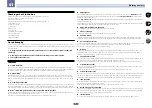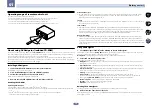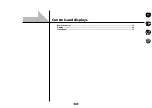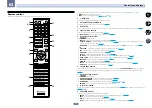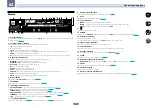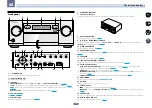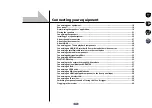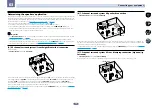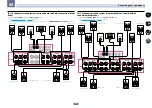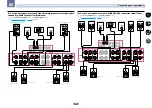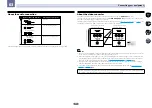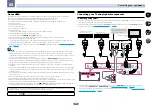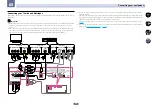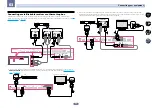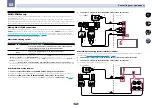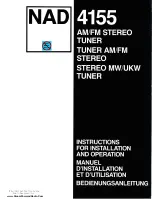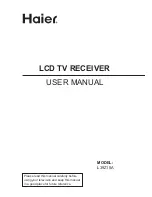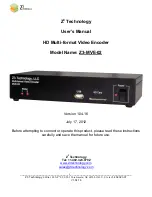
22
03
Connecting your equipment
Connecting the speakers
Each speaker connection on the receiver comprises a positive (+) and negative (–) terminal. Make sure to match
these up with the terminals on the speakers themselves.
This unit supports speakers with a nominal impedance of 4
W
to 16
W
.
CAUTION
!
These speaker terminals carry
HAZARDOUS LIVE
voltage. To prevent the risk of electric shock when con-
necting or disconnecting the speaker cables, disconnect the power cord before touching any uninsulated
parts.
!
Make sure that all the bare speaker wire is twisted together and inserted fully into the speaker terminal. If any
of the bare speaker wire touches the back panel it may cause the power to cut off as a safety measure.
Bare wire connections
CAUTION
Make sure that all speakers are securely installed. This not only improves sound quality, but also reduces the risk
of damage or injury resulting from speakers being knocked over or falling in the event of external shocks such as
earthquakes.
1 Twist exposed wire strands together.
2 Loosen terminal and insert exposed wire.
3 Tighten terminal.
1
2
3
10 mm (
3
/
8
in.)
Note
!
Please refer to the manual that came with your speakers for details on how to connect the other end of the
speaker cables to your speakers.
!
Use an RCA cable to connect the subwoofer. It is not possible to connect using speaker cables.
!
If you have two subwoofers, the second subwoofer can be connected to the
SUBWOOFER 2
terminal.
Connecting two subwoofers increases the bass sound to achieve more powerful sound reproduction. In this
case, the same sound is output from the two subwoofers.
Banana plug connections
If you want to use speaker cables terminated with banana plugs, screw the speaker terminal fully shut, then plug
the banana plug into the end of the speaker terminal.
Bi-amping your speakers
Bi-amping is when you connect the high frequency driver and low frequency driver of your speakers to different
amplifiers for better crossover performance. Your speakers must be bi-ampable to do this (having separate termi-
nals for high and low) and the sound improvement will depend on the kind of speakers you’re using.
SPEAKERS
FRONT
CENTER
A
R
L
FRONT HEIGHT
R
L
SPEAKERS
FRONT
CENTER
A
R
L
FRONT HEIGHT
R
L
High
Low
High
Low
Front right
Front left
Bi-amp compatible
speaker
Bi-amp compatible
speaker
CAUTION
!
Most speakers with both
High
and
Low
terminals have two metal plates that connect the
High
to the
Low
terminals. These must be removed when you are bi-amping the speakers or you could severely damage the
amplifier. See your speaker manual for more information.
!
If your speakers have a removable crossover network, make sure you do not remove it for bi-amping. Doing so
may damage your speakers.

